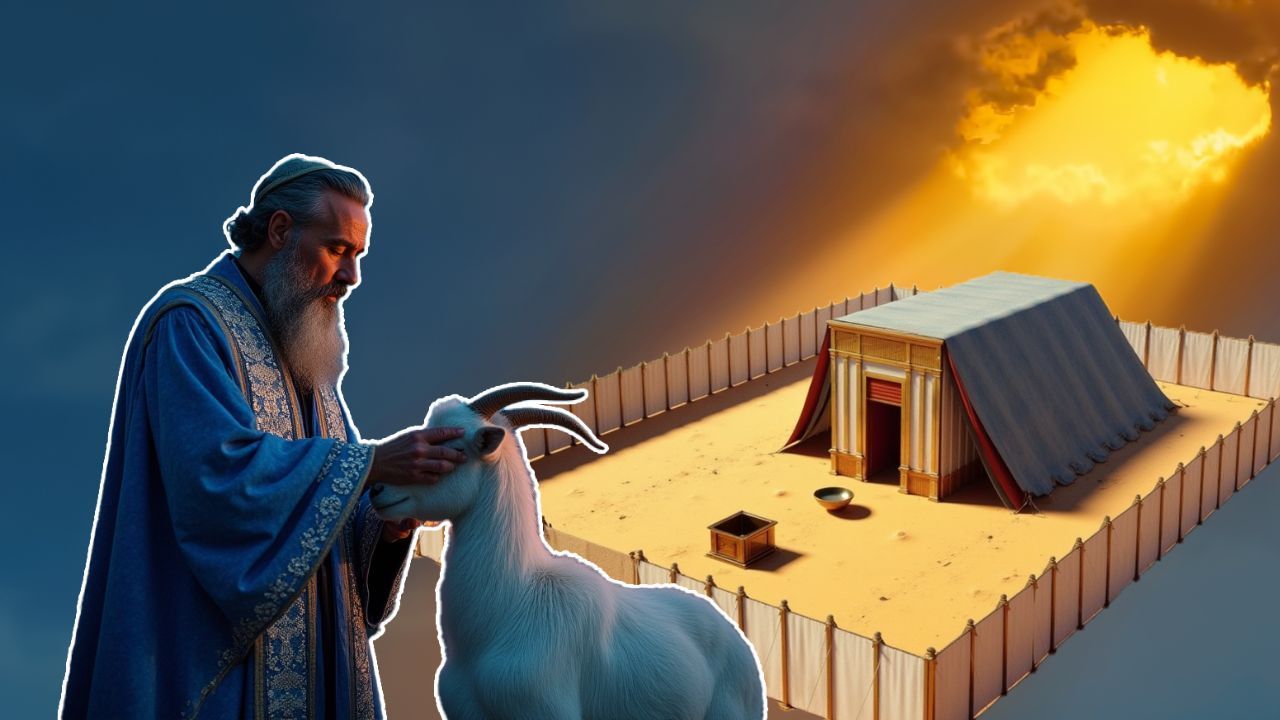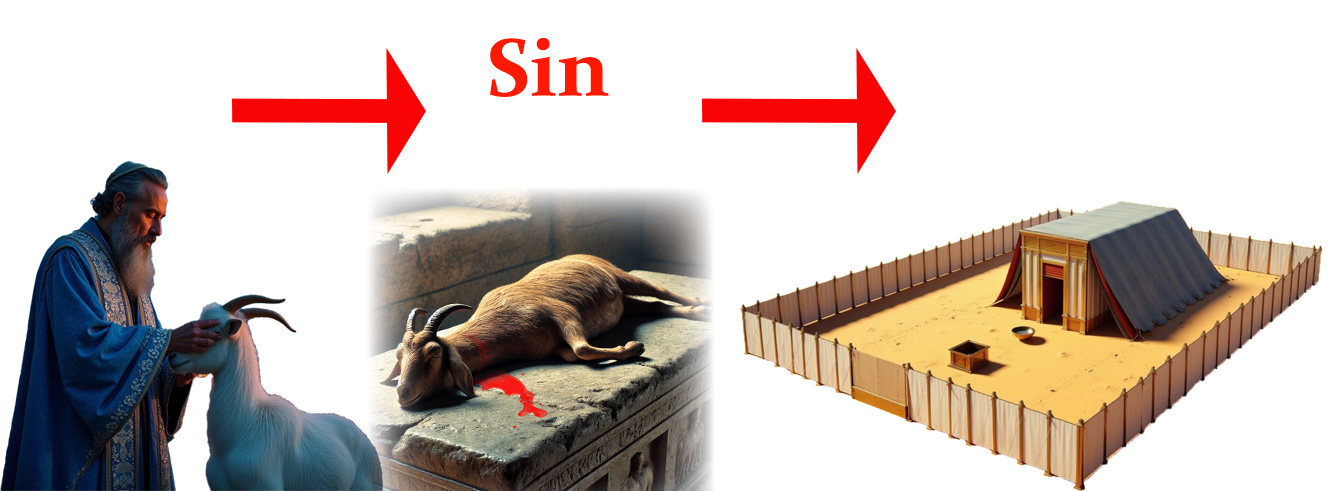
As Seventh-day Adventists, you should understand the Cleansing of the Sanctuary as taught by our pioneers. Our unique view of Daniel 8:14 is one of the reasons why the Seventh-day Adventist Church exists. This study explores the sanctuary system, its symbolic significance, and how it relates to the prophecy found in Daniel 8:14.
Introduction
"And he said unto me, unto 2,300 days, then shall the sanctuary be cleansed" (Daniel 8:14). This prophetic declaration has been the subject of discussion for decades. Most Evangelical and Catholic Scholars believe that the sanctuary referenced in this text is the literal Jewish sanctuary that was desecrated by Antiochus Epiphanes during the Maccabean revolt. It wasn't until Antiochus was defeated that the Jews "cleansed" the sanctuary by removing the idols from the temple and re-established Jewish worship. Ultimately, this restoration, which included sacrifices, incense burning, and the lighting of lamps, became known as Hanukkah, or the Festival of Lights. When Daniel 8:14 refers to the Cleansing of the Sanctuary, most Christians believe it was referring to this festival that was established on the 25th day of Kislev (November or December).
While it is logical for one to believe that Hanukkah was referenced in Daniel 8:14, as Adventists, we understand that the Cleansing of the Sanctuary refers to something much more important than one of the many persecutorial campaigns against the Jews. Thus, we know it wasn't the earthly sanctuary that was cleansed, but rather the Heavenly Sanctuary that is being purified! However, before we understand the cleansing of the heavenly, we should understand the cleansing of the earthly.
Understanding the Sanctuary
What Was the Sanctuary?
The sanctuary was a physical structure that God instructed Moses to build, serving as the focal point of Israel's worship system. The apostle Paul provides a detailed description in Hebrews 9:1-5, outlining a sacred complex with specific components and purposes.
The sanctuary consisted of two main areas:
- The Holy Place: Containing the lampstand, table of showbread, and altar of incense
- The Most Holy Place: Housing the ark of the covenant with its golden pot of manna, Aaron's budded rod, and the tablets of the covenant, overshadowed by the cherubim of glory
This basic structure remained consistent throughout Israel's history, whether as the portable tabernacle that was used during their wilderness wanderings or as part of the permanent temple in Jerusalem.
The Dual Purpose of the Sanctuary
The sanctuary served two fundamental purposes that might initially seem contradictory:
1. God's Dwelling Place Among His People
"And let them make me a sanctuary that I may dwell among them" (Exodus 25:8). The primary purpose was to provide a place where God could dwell with His people.
2. Dealing with Sin
"For the bodies of those beasts whose blood is brought into the sanctuary by the high priest for sin are burned without the camp" (Hebrews 13:11). The sanctuary also served as the center for addressing Israel's sin problem through the sacrificial system.
Due to the fact that one of the purposes of the sanctuary was to deal with the sins of Israel, you are about to see that this sin needed to be removed from the earthly sanctuary. In essence, the Jewish sanctuary needed to be cleansed.
The Sacrificial System and Sin Transfer
The Old Testament sacrificial system operated on a profound symbolic principle. When offering a sin offering, the process followed a specific pattern:
- Laying on of Hands: The sinner or priest would place hands on the animal's head. Leviticus 4:24 - "And he shall lay his hand upon the head of the goat, and kill it in the place where they kill the burnt offering before the LORD: it is a sin offering."
- Symbolic Transfer: This act represented the transfer of sin from the sinner to the innocent animal*
- Death as Payment: Due to the fact that the sins were symbolically transferred to the animal, the animal then received "the wages of sin"—death (Romans 6:23)
- Blood Application: The sin-stained blood was carried into the sanctuary and applied to the altar. Leviticus 4:25 says, "And the priest shall take of the blood of the sin offering with his finger, and put it upon the horns of the altar of burnt offering, and shall pour out his blood at the bottom of the altar of burnt offering."
* Typically performed by the Priest representing the people, except for specific rituals whereby the sinner himself performed the ritual.
Here, you should see that the sins were symbolically transferred from the sinner, to the animal, to the blood, to the sanctuary.

This process occurred daily throughout the year. As Hebrews 7:27 indicates, the high priests needed to "offer up sacrifice, first for his own sins, and then for the people's." Through this daily ritual, sins were symbolically transferred into the sanctuary, creating a need for the sanctuary to be cleansed.
The Day of Atonement
The Jewish religious calendar included one day each year dedicated to cleansing the sanctuary of its accumulated sins. In Scripture, this day is called the Day of Atonement (Yom Kippur). Leviticus 23:27 briefly describes this day:
Also on the tenth day of this seventh month there shall be a day of atonement: it shall be an holy convocation unto you; and ye shall afflict your souls, and offer an offering made by fire unto the LORD.
The Ceremony
Leviticus 16 provides details of the ceremony that occurred on this day.
The Day of Atonement involved a specific ritual:
- Two Goats Selected: And he shall take the two goats, and present them before the LORD at the door of the tabernacle of the congregation. And Aaron shall cast lots upon the two goats; one lot for the LORD, and the other lot for the scapegoat. Leviticus 16:7-8
- Sacrifice and Atonement made by the Lord's goat: And Aaron shall bring the goat upon which the LORD'S lot fell, and offer him for a sin offering...And Aaron shall bring the bullock of the sin offering, which is for himself, and shall make an atonement for himself, and for his house, and shall kill the bullock of the sin offering which is for himself. Leviticus 16:9,11
- Sanctuary Cleansing by the High Priest: "And he shall sprinkle of the blood upon it with his finger seven times, and cleanse it, and hallow it from the uncleanness of the children of Israel." Leviticus 16:19
- Sin Removal made upon the Scapegoat: And Aaron shall lay both his hands upon the head of the live goat, and confess over him all the iniquities of the children of Israel, and all their transgressions in all their sins, putting them upon the head of the goat, and shall send him away by the hand of a fit man into the wilderness: And the goat shall bear upon him all their iniquities unto a land not inhabited: and he shall let go the goat in the wilderness. Leviticus 16:21-22
- Duty of the people: And this shall be a statute for ever unto you: that in the seventh month, on the tenth day of the month, ye shall afflict your souls, and do no work at all, whether it be one of your own country, or a stranger that sojourneth among you: Leviticus 16:29
Conclusion
As you can see, the Cleansing of the Sanctuary was an extremely important ceremony. At the end of this ceremony, the sins of the people were blotted out. Isaiah 43:25 says, "I, even I, am he that blotteth out thy transgressions for mine own sake, and will not remember thy sins." We should also see that the people were required to afflict their souls during this time. This affliction was a deep soul searching, ensuring there was nothing between them and Jehovah.
Although this ceremony is no longer necessary, Adventists understand that this ceremony represents something that is occuring in heaven. In our next study, you will understand the cleansing of the Heavenly Sanctuary.

